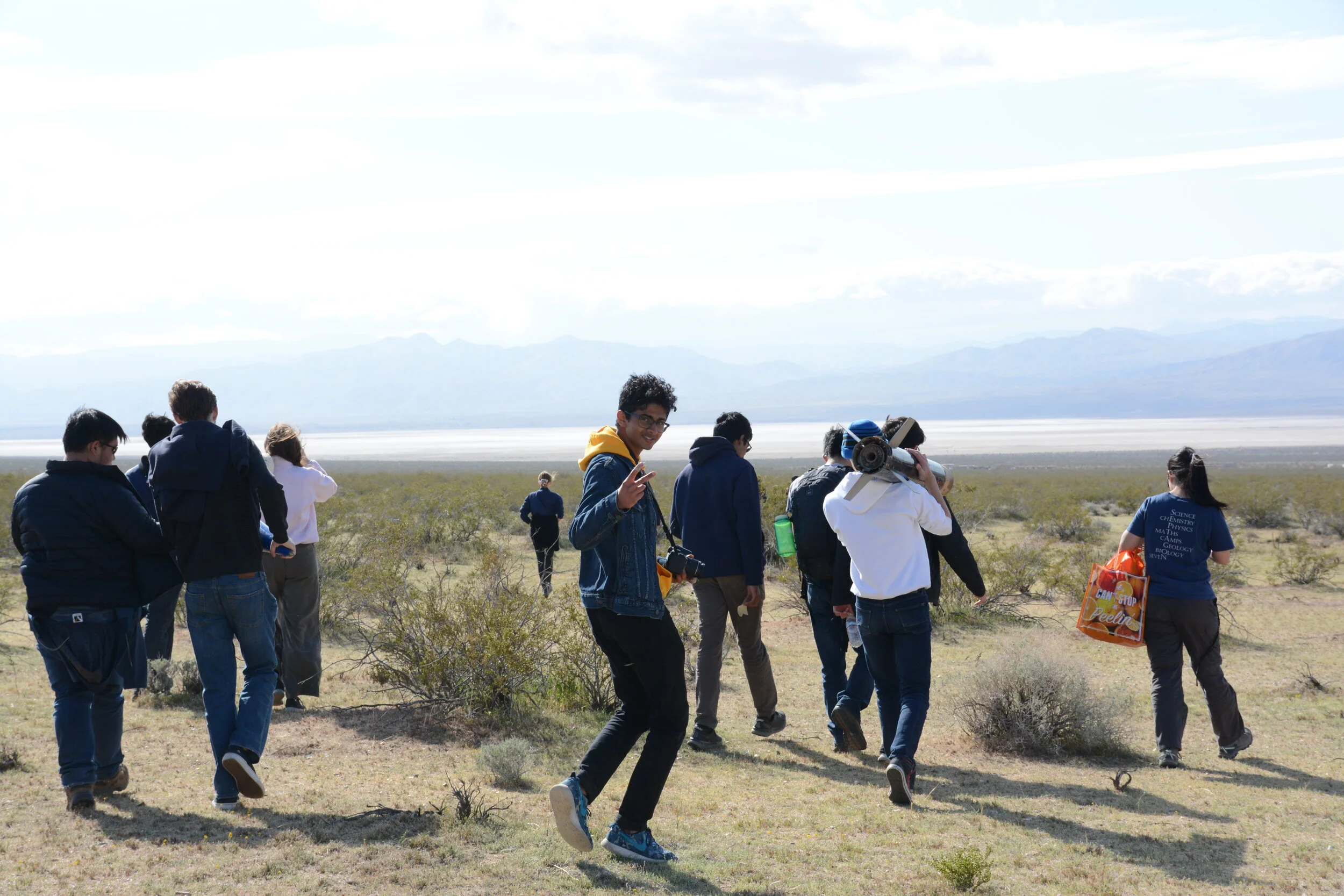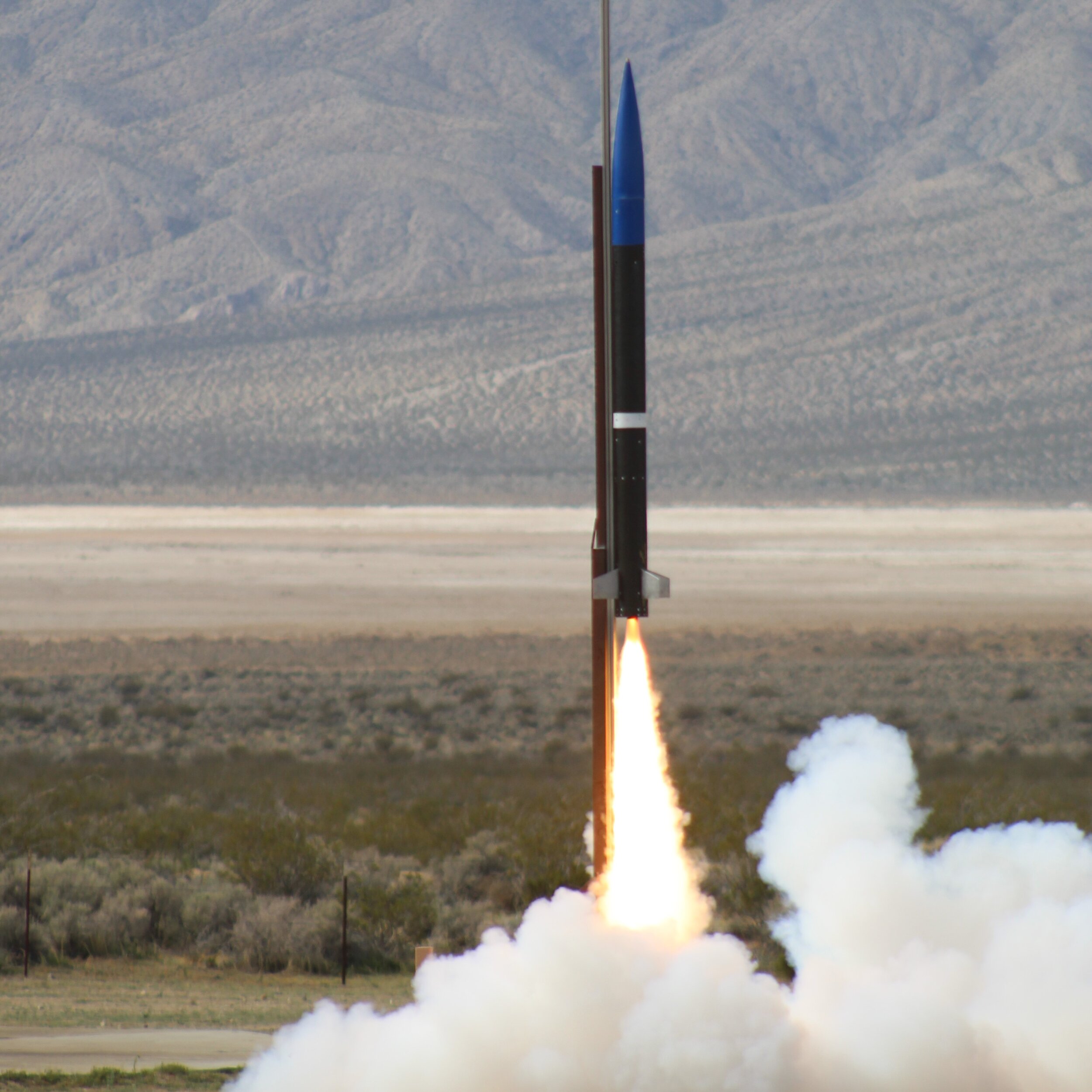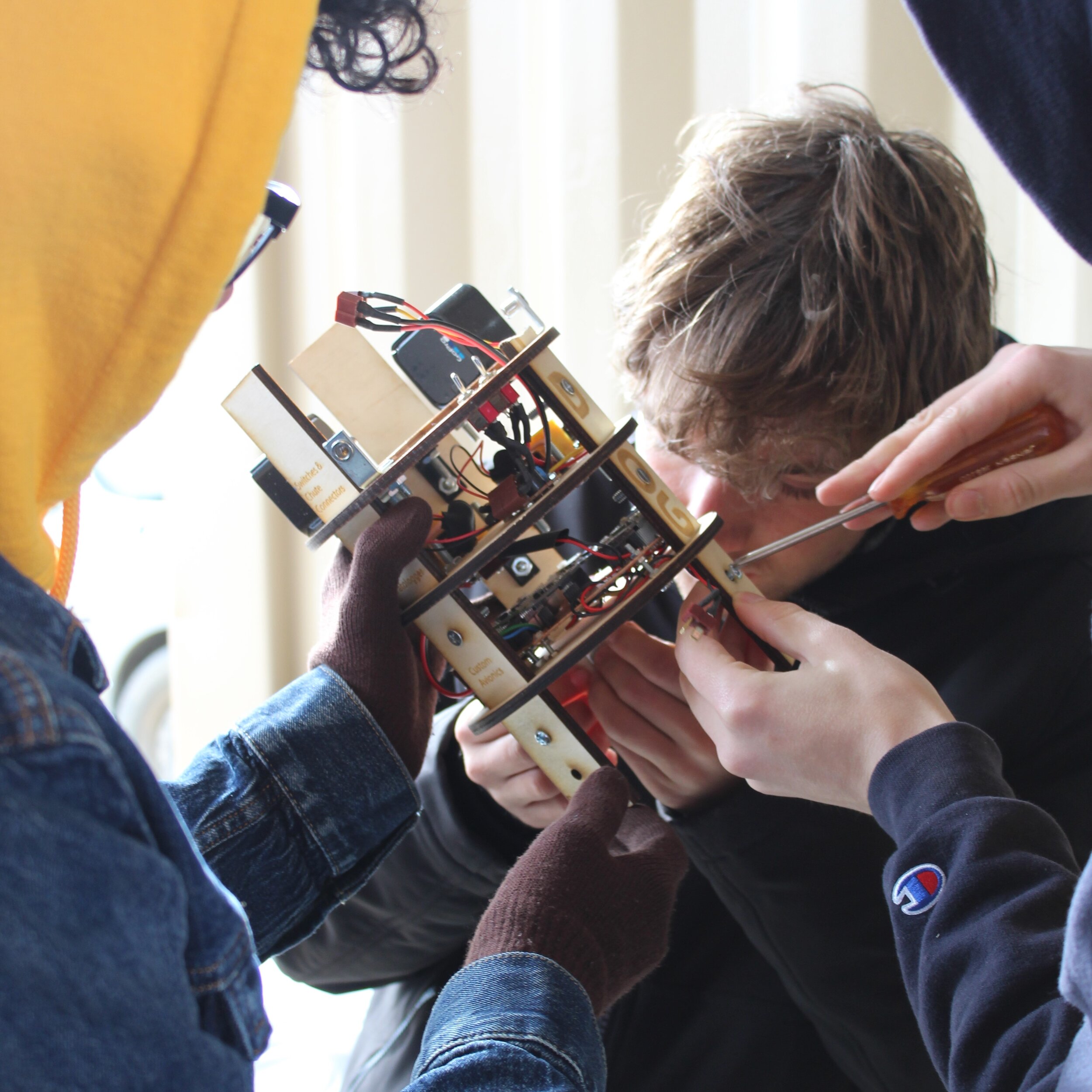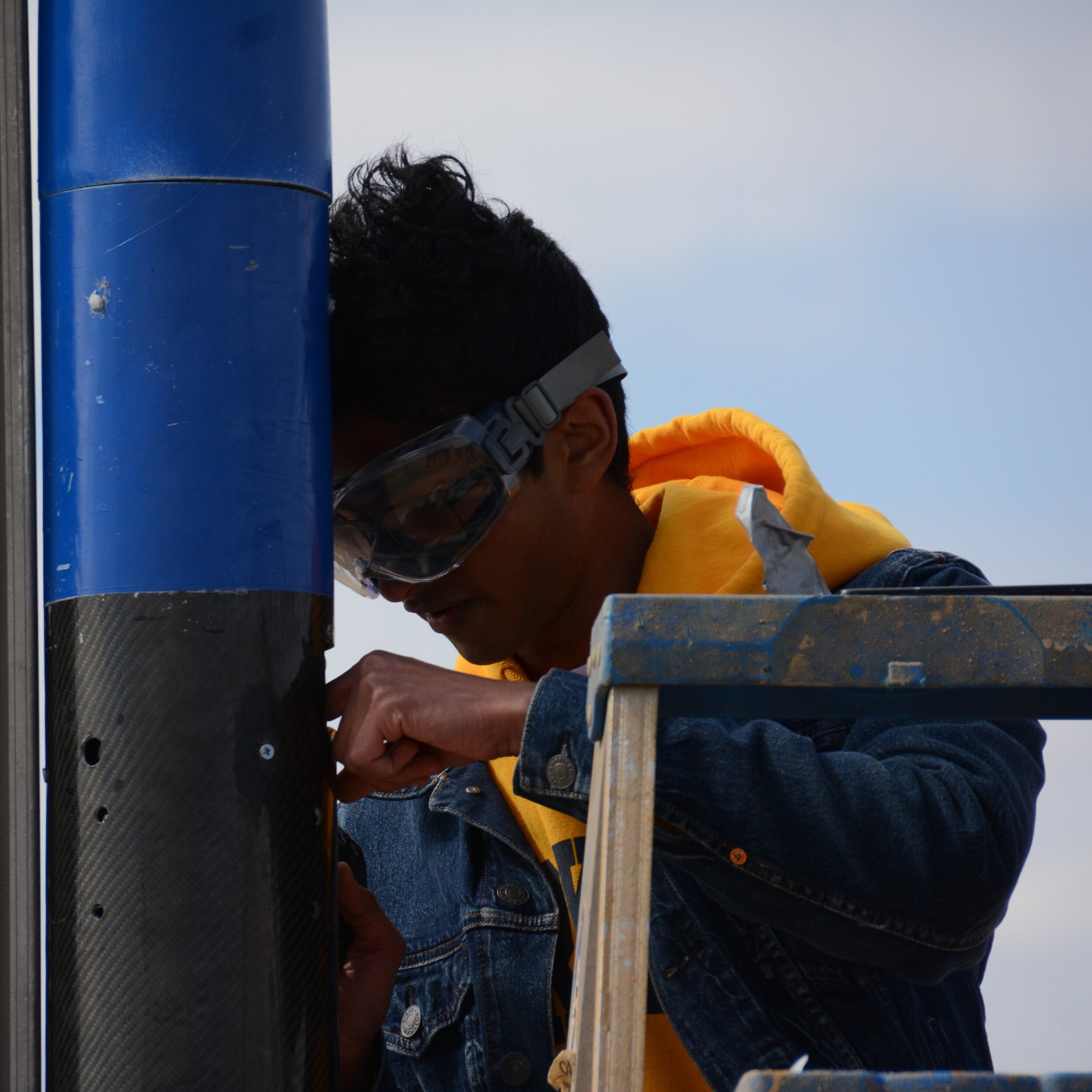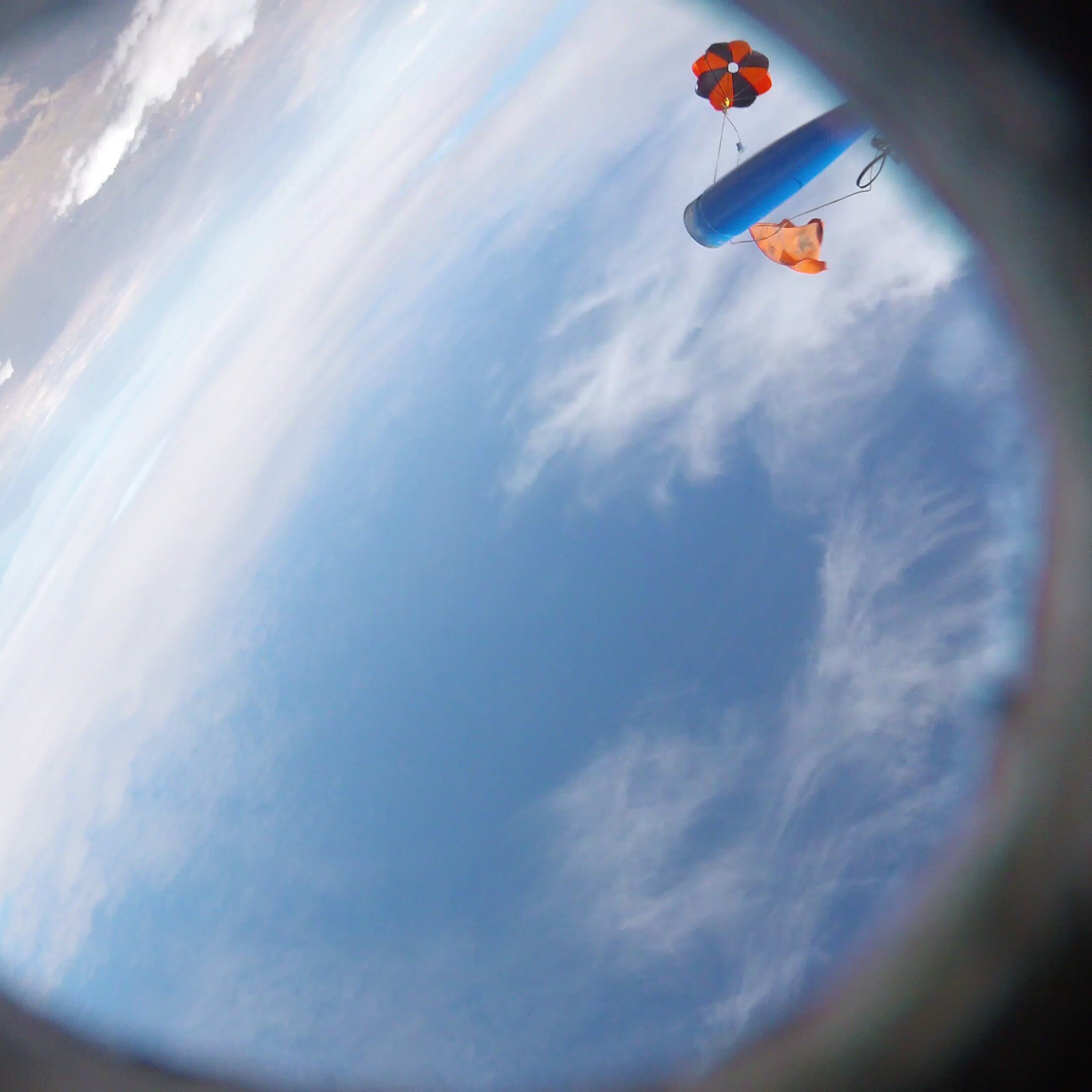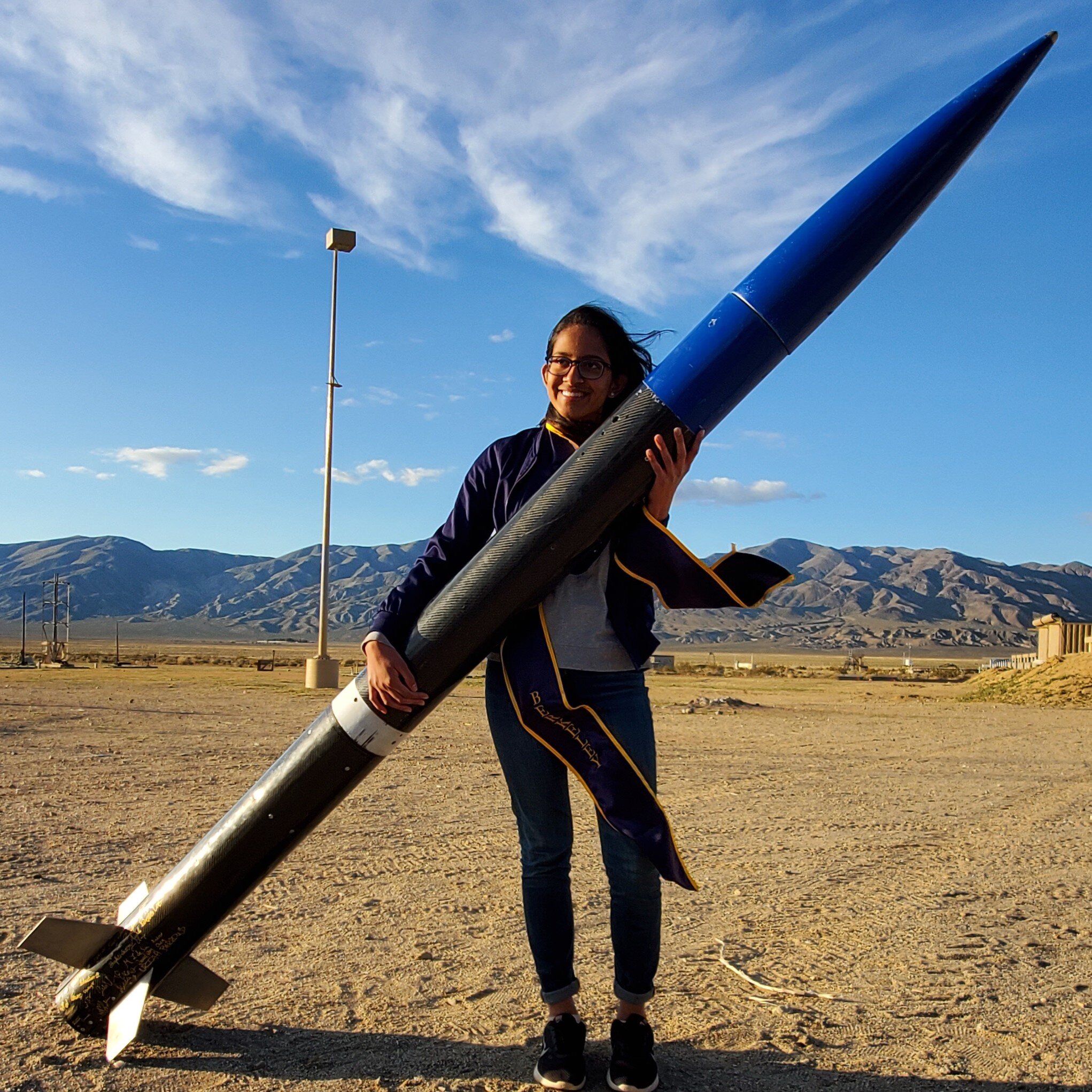LAD-4
LAD-4 “Updog” was the third full airframe designed, built, and flown by SEB. The first supersonic rocket launched by any team at UC Berkeley, LAD-4 features a robust all-composite airframe with a completely modular design, allowing multiple flights with minimal turnaround. This ensures that the necessary recovery infrastructure needed aboard later Eureka flights can be validated with confidence over a series of flights, and reduces the expense and time required for each subsequent flight.
Completely designed and manufactured in a span of seven weeks, LAD-4 was built with an optimized load-bearing composite aerostructure capable of withstanding supersonic flight. The dual-deployment recovery system aboard LAD-4 featured the chemical explosive-based separation mechanism developed for LAD-2 Ember. LAD-4 was equipped with a commercial apogee detection system along with a custom altimeter for redundancy, mirroring the infrastructure that will fly on Eureka rockets.
LAD-4 launched from the Friends of Amateur Rocketry launch Facility, Mojave Desert, CA in early March 2020. LAD-4 reached a maximum altitude of 11193 feet above ground level and a maximum velocity of Mach 1.2, establishing UC Berkeley records for altitude and speed.
11,193 Feet
TOP Altitude
90 Inch
Rocket Height
1.2 Mach
TOP Speed
6.5 Inch
Rocket Diameter
PROJECT HIGHLIGHT
Dual Deployment Recovery
The high design altitude of LAD-4 necessitated a dual-deployment recovery system that would reduce the drift time of the rocket during its descent. The dual-deployment configuration consisted of the separation of the nosecone and the deployment of a small drogue parachute at apogee, followed by the deployment of the 7-foot main parachute at an altitude of 700 feet AGL. Detecting apogee using a barometric altimeter, the onboard flight computer commanded the ignition of pyrotechnic charge that provided the impulse to fracture three nylon shear pins and eject the nosecone, inflating the drogue parachute. Later, a smaller charge was designed to release the main parachute, slowing down the rocket for a gentle touchdown onto the desert terrain.
PROJECT HIGHLIGHT
Modular Fin Retention
LAD-4 was designed with reusability and reliability in mind, with 6-8 total flights using the same airframe planned in the rocket’s lifecycle. These will serve as validation flights for a variety of hardware components, including the recovery system flown on the maiden flight, for EUREKA missions; the ability to flight-test hardware quickly and at low cost minimizes waste and allows SEB to continue working with one of the fastest development cycles of its kind.
Consequently, the ability to replace or repair a single airframe component damaged in flight was paramount. The aft section of LAD-4 was designed to allow for the removal and replacement of any number of fins, a departure from previous designs that incorporated fins as an integrated airframe component through permanent bonding techniques. Modularity was achieved using a compact retention system that held the fins in place, preloading them against unstabilizing forces in flight, yet avoiding permanent bonding through the use of threaded inserts for attachment.

